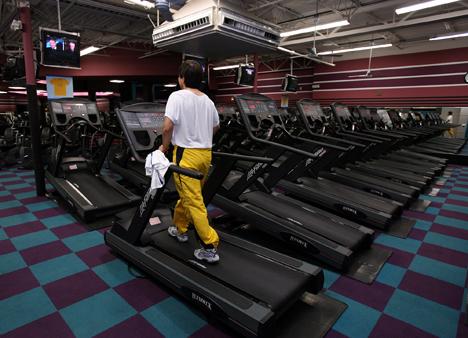Wee hours provide fun times
Jul 24, 2006
Last updated on May 12, 2016 at 03:51 a.m.
NEW YORK – It is sometime between 3 and 4 in the morning. I wake up and stick my head out my apartment window. No car alarms, no sirens, no loud conversations. The only thing I can hear is the drone of dozens of air conditioners in the sticky July night.
But I don’t feel lonely. I know that a few miles away, Jennifer Edson is likely surfing the Web and catching up on e-mail. Down in Texas, Wade Rayburn will be getting up for his nocturnal swim, and Ben Vizcaino is finishing his workout at the gym.
I am up at this hour to sample their theory: The only time to get some peace and calm and focus in this ever more hectic world is when most everyone else is sleeping.
Of course, thousands of Americans have no choice – they work all-night jobs at hotels, diners, hospitals, news desks and countless other places. But the people we’re talking about are those who actively choose to be conscious in the wee hours, who set their alarms or their body clocks to rise long before the rest of us, or sometimes never go to sleep in the first place.
Get The Daily Illini in your inbox!
Edson, a multimedia designer in New York, typically conks out at 9 or 10 p.m. when putting her kids to bed. For a few hours, she’s down for the count. But then she’ll be up by midnight and at the computer. She sleeps a couple more hours later in the morning.
“I love it when I can hear that stillness in the night,” says Edson, 47. “It’s the only time I can truly think.”
Sometimes, she’ll be sending e-mails and she’ll get one back – at 3 a.m – from a friend or colleague, often a fellow mother.
Vizcaino, 40, who works out between 1 and 3 a.m. at a nearby gym, says “people get to know you better. They know your routine. It’s a much friendlier atmosphere.”
A full-time student of oriental medicine, Vizcaino says there’s “something about the darkness” that makes him more creative, more focused, more engaged, more effective at studying. “When the sun goes down, I kind of come alive,” he said. Not to mention the lack of traffic, or lines at the supermarket, or for equipment at the gym.
It’s virtually impossible to know how many Americans are night owls. The Department of Labor’s Bureau of Labor Statistics now compiles data on how Americans spend their time, in the American Time Use Survey. During 2004, statistics show from 3 to 6 a.m., for example, the vast majority of people are engaged in “personal care activities” – including sleeping – followed by leisure and sports, and then work-related activities.
It’s clear, though, that there’s more and more to do in those wee hours, whether it be food-shopping, working out or making copies. 24-Hour Fitness Worldwide began as one club and now has more than 330 clubs in 16 states. Of 1,500 FedEx Kinko’s centers, 400 are 24-hour, and 35 percent of all copying at Kinko’s is done between 10 p.m. and 6 a.m., said spokeswoman Jenny Robertson.
Also clear is that technology has enabled us to stretch – or abolish – the boundaries of the day, more and more. Laptop computers, handheld wireless devices and cell phones give us huge flexibility and allow us to be away from our desks, but they also mean the work day never ends.
Frederic Luskin, an author and researcher at Stanford University who specializes in the effects of stress, worries that this lack of clear boundaries to the day can compound the pressure on us, leading to less healthy lives. The off-hours e-mails and cell phone calls are a major assault on our nervous system, he says.
“There’s a very tenuous balance between getting a lot done and exhausting yourself getting a lot done, which stops you from getting a lot done,” Luskin says.
Potential costs: less leisure and less intimacy with friends and family — two things we need in order to feel human.
It’s 10 p.m. now, and my new nocturnal acquaintances are gearing up for another night in the world of no traffic, no lines, free swim lanes and exquisite, silky silence.
I wish I could join them again.
Truth is, though, I’m beat.






